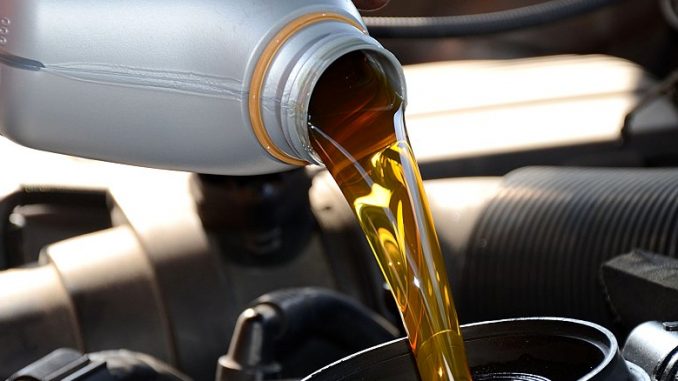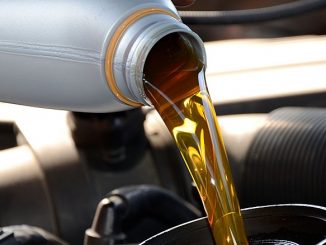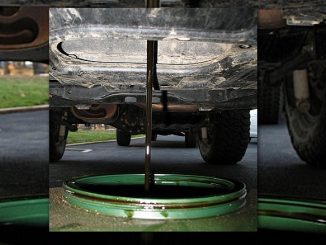
It’s a fact of life that behavior is influenced by what people believe, whether true or not. Numerous cases from history bear this out.
For example, sailors were once fearful of sailing outside the sight of land lest they would fall off the edge of the world. In the early 19th century, the train was considered dangerous because it was believed that if you moved faster than 25 miles per hour, you’d be traveling too fast to breathe. At a later date, the New York Times warned that electric light would cause blindness. Microwave ovens, automobiles and airplanes have had equally vociferous opponents.
Looking back, it’s easy to laugh at some of the things people once held as true. But these people were not stupid. They were misinformed. In many instances they had simply drawn conclusions before all the facts were in. How easy it is to make the same mistake today.
In our own time, synthetic motor oils have been the object of numerous misconceptions held by the general public. Many people, including some mechanics, have been misled by these persistent myths.
PARAMETERS OF THE DEBATE
Synthetic motor oils are fuel efficient, extended life lubricants manufactured from select base stocks and special purpose additives. Synthetic oil base stocks are made from organic compounds or synthetic hydrocarbons using a process that re-arranges the structure so all the molecules are uniform in size, shape and weight, a phenomenon that does not occur in nature. In contrast to petroleum oils which are pumped from the earth and refined, synthetics are custom-designed to produce, in effect, the ideal lubricant.
In responding to the objections most commonly raised against synthetics it is important to establish the parameters of the debate. When speaking of synthetic motor oils, this article is defending the lubricants which have been formulated to meet the performance standards set by the American Petroleum Institute (API). (The first such synthetic motor oil independently tested and confirmed to meet these industry-accepted tests for defining engine oil properties and performance characteristics was AMSOIL 100% Synthetic 10W-40 in 1972.)
Many people with questions about synthetics haven’t known where to turn to get correct information. Is it super oil or snake oil? Some enthusiasts will swear that synthetics are capable of raising your car from the dead. On the other hand, the next fellow asserts that synthetics will send your beloved car to an early grave. Where’s the truth in all this?
In an effort to set the record straight, we’ve assembled here ten of the more persistent myths about synthetic motor oils to see how they stack up against the facts.
Myth #1: Synthetic motor oils damage seals.
Untrue. It would be foolhardy for lubricant manufacturers to build a product that is incompatible with seals. The composition of seals presents problems that both petroleum oils and synthetics must overcome. Made from elastomers, seals are inherently difficult to standardize.
Ultimately it is the additive mix in oil that counts. Additives to control seal swell, shrinkage and hardening are required, whether it be a synthetic or petroleum product that is being produced.
Myth #2: Synthetics are too thin to stay in the engine.
Untrue. In order for a lubricant to be classified in any SAE grade (10W-30, 10W-40, etc.) it has to meet certain guidelines with regard to viscosity (“thickness”).
For example, it makes no difference whether it’s 10W-40 petroleum or 10W-40 synthetic, at -25 degrees centigrade (-13F) and 100 degrees centigrade (212 degrees F) the oil has to maintain a standardized viscosity or it can’t be rated a 10W-40.
Myth #3: Synthetics cause cars to use more oil.
Untrue. Synthetic motor oils are intended for use in mechanically sound engines, that is, engines that don’t leak. In such engines, oil consumption will actually be reduced. First, because of the lower volatility of synlubes. Second, because of the better sealing characteristics between piston rings and cylinder walls. And finally, because of the superior oxidation stability (i.e. resistance of synthetics against reacting with oxygen at high temperatures.)
Myth #4: Synthetic lubricants are not compatible with petroleum.
Untrue. The synthesized hydrocarbons, polyalphaolefins, diesters and other materials that form the base stocks of high-quality name brand synthetics are fully compatible with petroleum oils. In the old days, some companies used ingredients that were not compatible, causing quality synlubes to suffer a bum rap. Fortunately, those days are long gone.
Compatibility is something to keep in mind, however, whether using petroleum oils or synthetics. It is usually best to use the same oil for topping off that you have been running in the engine. That is, it is preferable to not mix your oils, even if it is Valvoline or Quaker State you are using. The reason is this: the functions of additives blended for specific characteristics can be offset when oils with different additive packages are put together. For optimal performance, it is better to use the same oil throughout.
Myth #5: Synthetic lubricants are not readily available.
Untrue. This may have been the case two decades ago when AMSOIL and Mobil 1 were the only real choices, but today nearly every major oil company has added a synthetic product to their lines. This in itself is a testament to the value synthetics offer.
Myth #6: Synthetic lubricants produce sludge.
Untrue. In point of fact, synthetic motor oils are more sludge resistant than their petroleum counterparts, resisting the effects of high temperature and oxidation. In the presence of high temperatures, two things can happen. First, an oil’s lighter ingredients boil off, making the oil thicker. Second, many of the complex chemicals found naturally in petroleum base stocks begin to react with each other, forming sludge, gum and varnish. One result is a loss of fluidity at low temperatures, slowing the timely flow of oil to the engine for vital component protection.
Further negative effects of thickened oil include the restriction of oil flow into critical areas, greater wear and loss of fuel economy.
Because of their higher flash points, and their ability to withstand evaporation loss and oxidation, synthetics are much more resistant to sludge development.
Two other causes of sludge — ingested dirt and water dilution — can be a problem in any kind of oil, whether petroleum or synthetic. These are problems with the air filtration system and the cooling system respectively, not the oil.
Myth #7: Synthetics can’t be used with catalytic converters or oxygen sensors.
Untrue. There is no difference between synthetic and petroleum oils in regards to these components. Both synthetic and petroleum motor oils are similar compounds and neither is damaging to catalytic converters or oxygen sensors. In fact, because engines tend to run cleaner with synthetics, sensors and emission control systems run more efficiently and with less contamination.
Myth#8: Synthetics void warranties.
Untrue. Major engine manufacturers specifically recommend the use of synthetic lubricants. In point of fact, increasing numbers of high performance cars are arriving on showroom floors with synthetic motor oils as factory fill.
New vehicle warranties are based upon the use of oils meeting specific API Service Classifications (for example, SJ/CF). Synthetic lubricants which meet current API Service requirements are perfectly suited for use in any vehicle without affecting the validity of the new car warranty.
In point of fact, in the twenty-eight years that AMSOIL Synthetic Lubricants have been used in extended service situations, over billions of miles of actual driving, these oils have not been faulted once for voiding an automaker’s warranty.
Myth #9: Synthetics last forever.
Untrue. Although some experts feel that synthetic base stocks themselves can be used forever, it is well known that eventually the additives will falter and cause the oil to require changing. Moisture, fuel dillution, and the by-products of combustion (acids and soot) tend to use up additives in an oil, allowing degradation to occur.
However, by “topping off”, additives can be replenished. Through good filtration and periodic oil analysis, synthetic engine oils protect an engine for lengths of time far beyond the capability of non-synthetics.
Myth #10: Synthetics are too expensive.
Untrue. Tests and experience have proven that synthetics can greatly extend drain intervals, provide better fuel economy, reduce engine wear and enable vehicles to operate with greater reliability. This more than offsets initial price differences. All these elements combine to make synthetic engine oils more economical than conventional non-synthetics.
In Europe, synthetics have enjoyed increasing acceptance as car buyers look first to performance and long term value rather than initial price. As more sophisticated technology places greater demands on today’s motor oils, we will no doubt see an increasing re-evaluation of oil buying habits in this country as well.
 CONCLUSIONS
CONCLUSIONS
Since their inception, manufacturers of synthetic motor oils have sought to educate the public about the facts regarding synthetics, and the need for consumers to make their lubrication purchasing decisions based on quality rather than price. As was the case with microwave ovens or electric lights, a highly technological improvement must often overcome a fair amount of public skepticism and consumer inertia before it is embraced by the general population.
But the word is getting out as a growing number of motorists worldwide experience the benefits of synthetic lubrication. The wave of the future, in auto lubes, is well under way.




